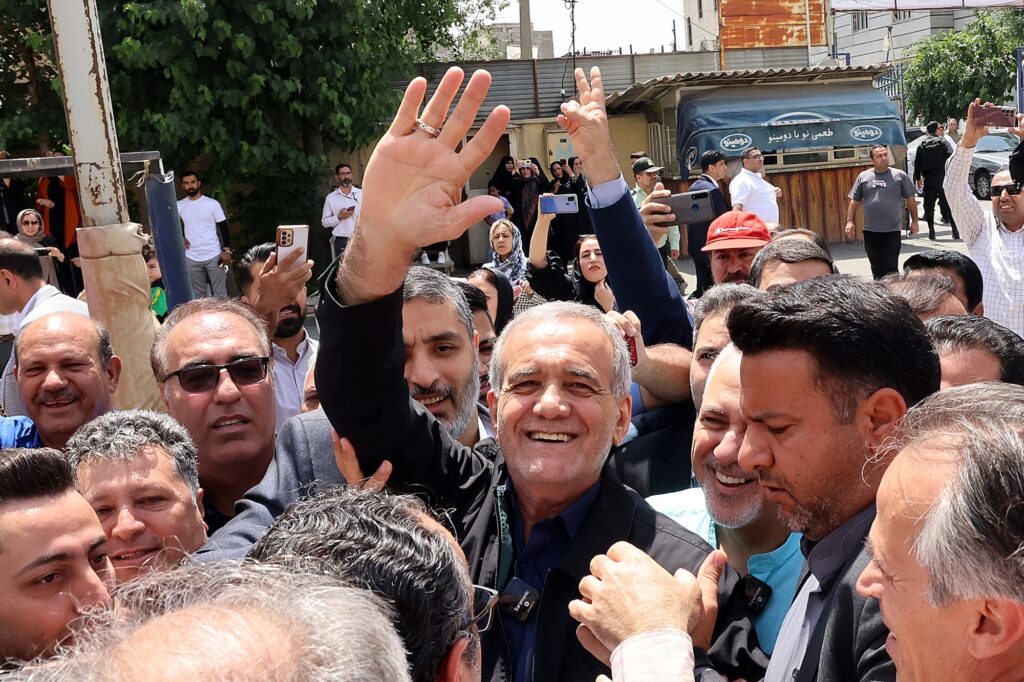
Masoud Pezeshkian, a 69-year-old heart surgeon who wants to revive the nuclear deal with the West, was voted president of Iran following a snap election that underscored major challenges facing the country’s clerical leadership.
Pezeshkian beat hard-line Islamist Saeed Jalili, 58, by almost 3 million votes in a runoff that was only marginally better attended than last week’s first round, according to officials.
Pezeshkian, who was health minister under former reformist President Mohammad Khatami, takes over at a complicated and troubled time for Iran both at home and abroad.
The Islamic Republic has faced a major crisis of legitimacy for several years with frequent protests directly challenging the religious establishment and Supreme Leader Ayatollah Ali Khamenei.
Iran’s conflict with Israel has also reached perilous levels in recent months. The two countries almost went to war after trading direct blows in April. Tensions remain very high in the region as Israel continues its war on Iran-backed Hamas in Gaza and becomes further embroiled in conflict with Hezbollah, which is heavily supported by the Islamic Republic.
He also faces the possibility of Donald Trump’s return to the White House after US elections in November. Trump’s foreign policy during his initial 2017-2021 term was defined by a hostile “maximum pressure” strategy against Iran that destabilized the Persian Gulf, rattled oil markets and almost triggered a direct war.
It was Trump who walked away from the nuclear deal agreed to by his predecessor, Barack Obama.
Turnout in the snap election, triggered by the May death of cleric Ebrahim Raisi, was among the lowest ever recorded for a presidential vote in Iran, highlighting how much malaise and distrust Khamenei’s political system faces.
Pezeshkian’s arrival in office will mark a sharp departure from his predecessor Raisi. He’s the first non-cleric since Mahmoud Ahmadinejad to be elected president and his almost clean-shaven face and straightforward style emphasizes his distance from a clerical elite that’s faced unprecedented levels of opposition in recent years.
While he’s seen as a modern-minded and highly educated man, he is also deeply religious. His frequent use of English business jargon in televised debates was balanced by recitations of the Quran, winning him support from more conservative voters.
During his campaign, Pezeshkian pledged to tackle high inflation, pursue sanctions relief and revive the tattered nuclear deal with world powers. He surrounded himself with moderates and reformists from former President Hassan Rouhani’s foreign policy team, including ex-Foreign Minister Mohammad Javad Zarif.
But he faces a potentially tough time in office. Iran’s parliament is dominated by hardliners who have scuttled previous efforts to restore the 2015 nuclear accord and are firmly against attempts to change banking laws so they abide by Financial Action Task Force standards.
Pezeshkian will also be expected to address fierce opposition to strict laws on women’s clothing and their harsh treatment at the hands of security forces. That’s something that his reformist and moderate predecessors have mostly failed to achieve because so much of Iran’s policy is ultimately decided by unelected bodies like the judiciary or Khamenei himself.
KOIKI Media bringing the world 🌎 closer to your door step
